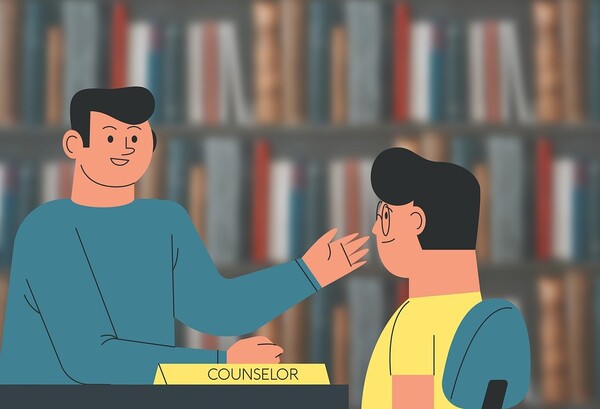7 Role Models from History To Inspire Your Child
Your children are growing up in a wonderful world where they can be virtually pursue anything they want, no matter their gender and physical ability. They may dream of becoming an astronaut, a paleontologist, or a fire fighter. But what can you do to encourage and help them reach those dreams? What if you yourself need some inspiration?
Here are seven role models from history that you can teach them about to inspire your child to be all they can be.
Benjamin Franklin
Benjamin Franklin was a great man. He was a printer, writer, scientist, and politician. He was also a diplomat and publisher. In addition to this, worked as an inventor, postmaster general, and public servant.
Franklin wrote Poor Richard’s Almanack, one of the most popular publications in colonial America because of the fact that it contained a lot of useful information. Franklin’s first Almanac was published on December 19, 1732, under the pen name of Richard Saunders.
Abraham Lincoln
Abraham Lincoln was the 16th president of the United States, serving after James Buchanan from March 1861 until his assassination in April 1865. He led the country through its Civil War and is considered one of our most beloved presidents.
He died at the age of 56 years after being shot by an assassin while attending a play at Ford’s Theater in Washington, DC. His wife, Mary Todd Lincoln, was with him but was unharmed. Abraham was buried in Oak Ridge Cemetery in Springfield, Illinois, where he spent most of his life growing up before moving to Washington, DC. There he became president after winning the election against Stephen Douglas, who later became Supreme Court Justice for several decades.
Lincoln became president when America was going through difficult times. He preserved the Union during the American Civil War. After a few months of the war, his Gettysburg speech became very popular and is still studied today.
Ulysses S. Grant
Ulysses S. Grant is the only president to have been impeached. Grant was the first president elected without winning the popular vote, but he did win by a landslide in 1868.
President Grant served two full terms in office, which was unprecedented because no other president had done it before him. Only four more have served that long since. He died on July 23, 1885, while serving his second term as president and was succeeded by James A Garfield.
Ulysses S. Grant was born to Jesse Grant in Galena, Illinois. He was the hero of the Civil War, leading the Union Army to victory while serving as the Commanding General. You can direct your kids to read about many heroes like Grant online. There are many websites dedicated to historical heroes and events.
Road To The Civil War is one such website. The website includes content about the Civil War and features a few books. One of these books mentions the pre-war events and narrates how the Civil War became one of American history’s deadliest but inevitable events. Other books have photographs of the 19th century that help remember the war.
Mahatma Gandhi
Mahatma Gandhi is a great role model for children. He was one of the leaders in India’s independence movement, championing non-violent resistance as an alternative to war. His example shows that you can be powerful and influential without resorting to violence or aggression.
Gandhi used his influence as a leader to help others. For example, he encouraged people not only to give up their personal belongings but also their clothes if they had more than they needed. In 1906, he gave birth to Satyagraha, the non-violence movement. Truth and non-violence were the fundamentals of Gandhi’s thought process, which he followed throughout his entire life.
Lessons from those who lived great lives shows kids that it’s not only important what they do themselves, but also how they can encourage others by setting an example through their actions and choices.
Nelson Mandela
Nelson Mandela was a lawyer and activist who spent 27 years in prison for his fight against apartheid. Searching Google to learn about apartheid is an educational journey all its own. He became the first black president of South Africa, but he never forgot how hard it was to be a kid growing up in South Africa under that oppressive system.
July 18 is celebrated as Mandela Day to celebrate his birth anniversary. On this day, people are supposed to do something good for others for 67 minutes, representing his 67 years of fighting to bring change in society for black people.
In 2013, Mandela passed away at age 95 after living a great life full of accomplishments and service to others. A rewarding life is not always an easy life and Mandela fully knew this from his own experience. His legacy lives on through his children and now yours.
Louisa May Alcott

If your child is a fan of Little Women, they will love to hear about the real-life author behind their favorite book. Louisa May Alcott was an American novelist and poet best known for her novel Little Women, published in 1868. She was the daughter of Bronson Alcott and Abigail May Alcott.
Louisa grew up surrounded by writers. Her father had been an abolitionist before moving his family to Concord, Massachusetts. (Google the word abolitionist) In Concord he opened a school called Fruitlands with his friend Amos Bronson Alcox, who shared many similar views on education and philosophy as himself.
The experiment failed miserably, though, when only two students showed up. He then moved back home and opened another school called Hillside House School which lasted only four months before closing down. This one also due to lack of attendance. After this failure, Louisa’s mother encouraged her husband because at least he had tried to make a difference to children through his love of teaching.
The Wright Brothers
The Wright brothers were Orville (1871–1948) and Wilbur (1867–1912). Together, they were American aviation pioneers credited with inventing and building the world’s first successful powered airplane. Born in Ohio, the brothers developed an early interest in aviation and mechanics. They conducted extensive research on aerodynamics and wing designs, leading them to develop a three-axis control system that allowed a pilot to maintain stability and control in flight.
After numerous experiments and test flights with gliders, the Wright brothers achieved their historic first powered flight on December 17, 1903, at Kitty Hawk, North Carolina. Orville piloted the aircraft, known as the Wright Flyer, for a distance of 120 feet in 12 seconds. This groundbreaking achievement marked the birth of modern aviation.
Over the years, the Wright brothers continued to refine and improve their aircraft designs, contributing significantly to the development of aviation technology. Their accomplishments laid the foundation for the rapid advancement of aviation in the 20th century. The Wright brothers’ legacy continues to be celebrated as a pivotal moment in the history of human flight.
Helen Keller
Helen Keller was the first deafblind person to earn a Bachelor of Arts degree. She is also known for advocating for people with disabilities, especially blind and deafblind people. Helen also became an author of 14 books.
She was born on June 27, 1880, in Tuscumbia, Alabama, USA, to Arthur Keller and Kate Adams Keller. At 19 months old, she became ill with a fever which left her without sight or hearing. For the first 7 years of her life Helen communicated using “home sign”, which are gestures deaf children make up themselves to communicate. Today, deaf children are taught much earlier to communicate, but in 1880 her first teacher, Anne Sullivan, did not come into her life until she was 6 years old.
Anne Sullivan, another remarkable woman worth learning about, devoted her life to teaching Helen to communicate using sign language and braille. Remarkably, she also learned to read lips and eventually talk. Helen would put her hands on Anne’s mouth learn the shape of each vowel as it was spoken.
Conclusion
There are many more inspirational figures in history, of course. These are just a few examples of famous and influential people that can inspire children and begin a educational journey into lives of many others. These people had a disability, faced a challenge, or were different from others in some way. By learning about them, children will understand that being different isn’t something to be ashamed or afraid of; it’s something special.











